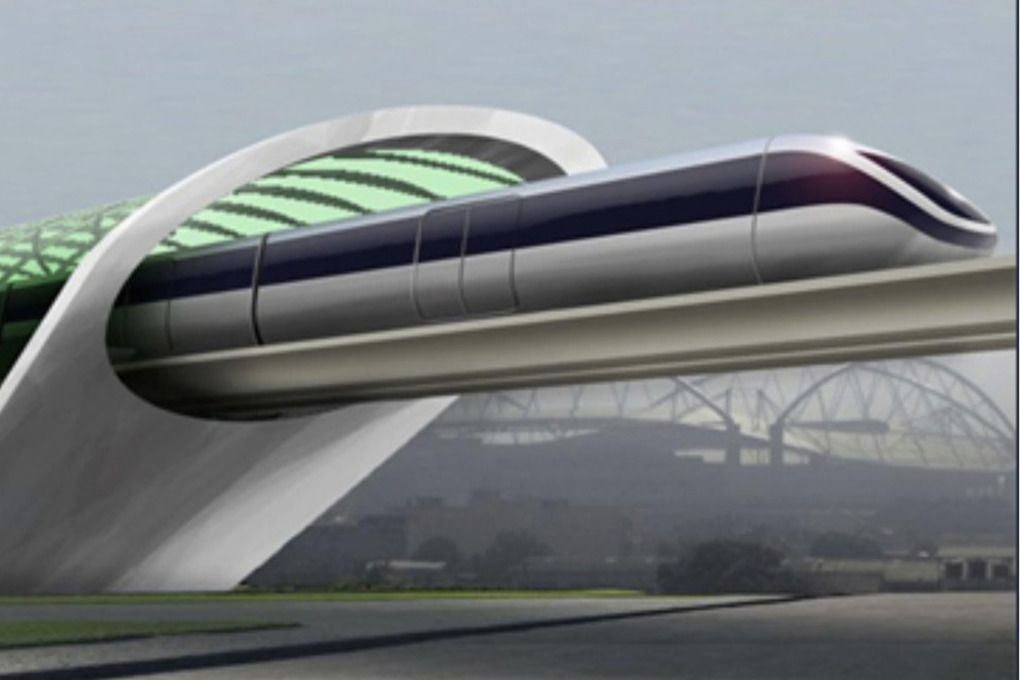A vacuum train of the future has appeared: it will accelerate to 2000 km per hour
[ad_1]

For more than a century, people have relied on airplanes to dramatically reduce domestic travel time. But imagine boarding a train that will take you to your destination even faster than any commercial airplane. This is potentially the reality awaiting China over the next few decades as the country reaches a major milestone in its quest to introduce bullet trains.
China’s T-Flight train reached a record speed of 387 mph (622 kph) on a short test track – even faster than Japan’s MLX01 Maglev, the world’s fastest-running train (361 mph), Daily reports. Mail.
However, Chinese engineers hope that once commercialized their train will reach a whopping 1,243 mph – far faster than the speed of sound and more than twice as fast as a Boeing 737 jet.
At this speed, a T-Flight train could travel from Wuhan to Beijing in just 30 minutes, rather than the four hours of modern high-speed trains.
T-Flight uses magnetic levitation (maglev) technology, which uses magnets to lift containers off a track, allowing them to glide smoothly. This eliminates the need for wheels and therefore any friction, allowing for faster and quieter service.
As the Daily Mail notes, T-Flight could be a vacuum train, meaning it would transport people at top speed through tubes between distant locations.
The concept, first proposed in 1910 by American engineer Robert Goddard, again aroused interest in 2013 thanks to a white paper by billionaire entrepreneur and SpaceX founder Elon Musk, the Daily Mail emphasizes.
The T-Flight train was built by the China Aerospace Science and Industry Corporation (CASIC). In testing at Datong in northern Shanxi province, the T-Flight reached speeds of 387 mph (623 km/h) in a low-vacuum tube just 1.2 miles (2 km) long.
In the second round of testing, CASIC plans to expand the track by more than 30 times so that it can reach higher speeds, Live Science reports.
Ultimately, the project aims to build a subway system between Wuhan and Beijing – a distance of more than 650 miles (1,055 km) – that could cut travel times from four hours to half an hour.
However, this could still be many decades away due to costs and practical problems – akin to the beleaguered HS2 rail line in the UK, the Daily Mail says.
If T-Flight does reach 1,243 mph once commercialized, it would be well ahead of trains currently in service around the world, not to mention airplanes.
The bullet train in Japan travels at 275mph, while the Eurostar train travels at 186mph, and most UK trains travel at around 125mph.
That would be even faster than NASA’s newest high-speed experimental aircraft, the X-59, which the agency says is capable of 937 mph.
However, the T-Flight would not quite match the Concorde, the last supersonic aircraft, which could fly at 1,350 mph.
China already has high-speed Fuxing bullet trains, but they do not use magnetic levitation technology and have a top speed of 350 kilometers per hour (217 mph), the Daily Mail writes.
However, China does have the world’s first commercial maglev system. Opened in 2002 in Shanghai, the 18.6-mile section connects Shanghai Pudong Airport and the city center and cost more than £1 billion to build. Trains on this line reach speeds of up to 431 kilometers per hour (267 mph) and are by far the fastest commercial train system in the world.
The world’s fastest train was built by Japan but has yet to enter commercial service. Operated by Japan Railways Group, the maglev train set a world record by reaching a speed of 374 mph (603 km/h) on an experimental track in 2016.
[ad_2]
Source link








